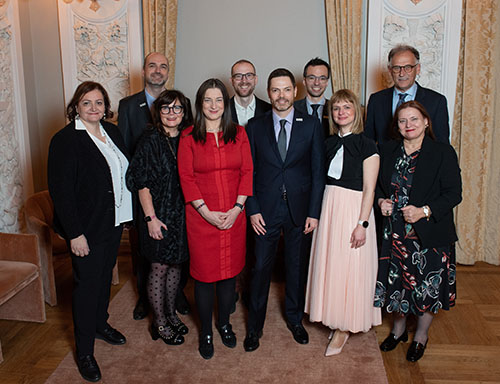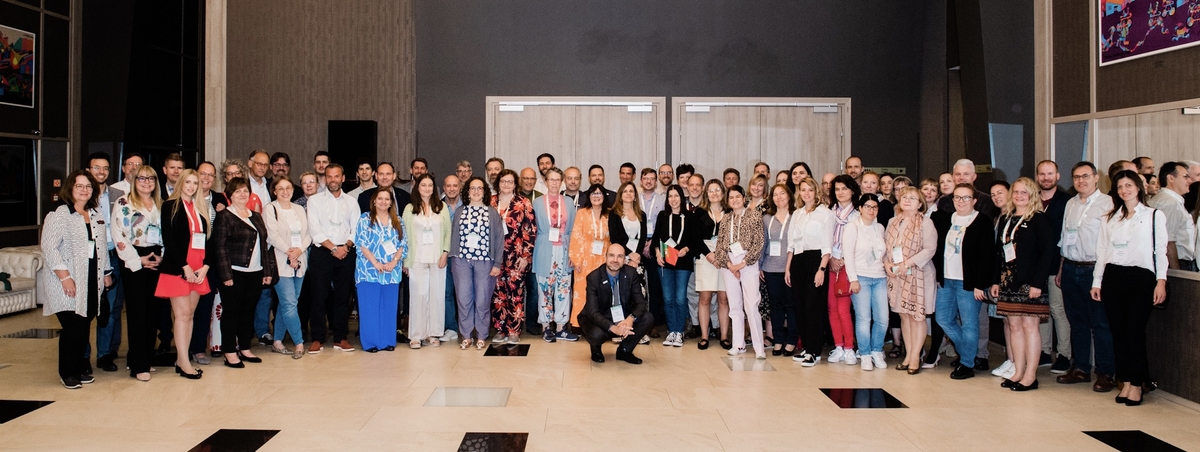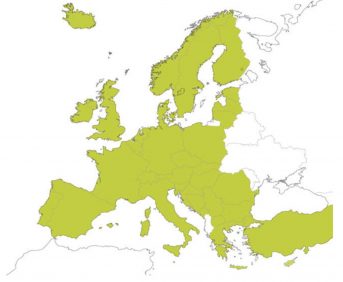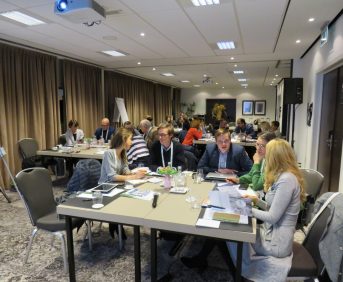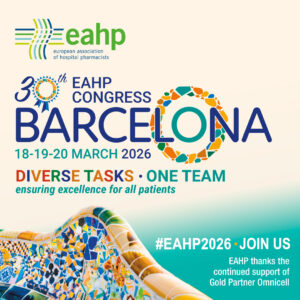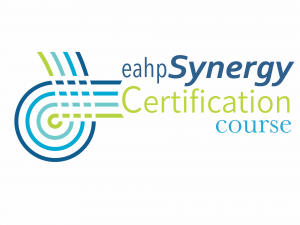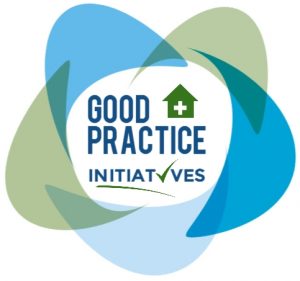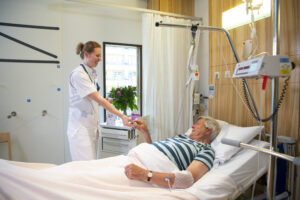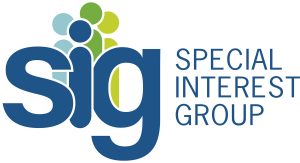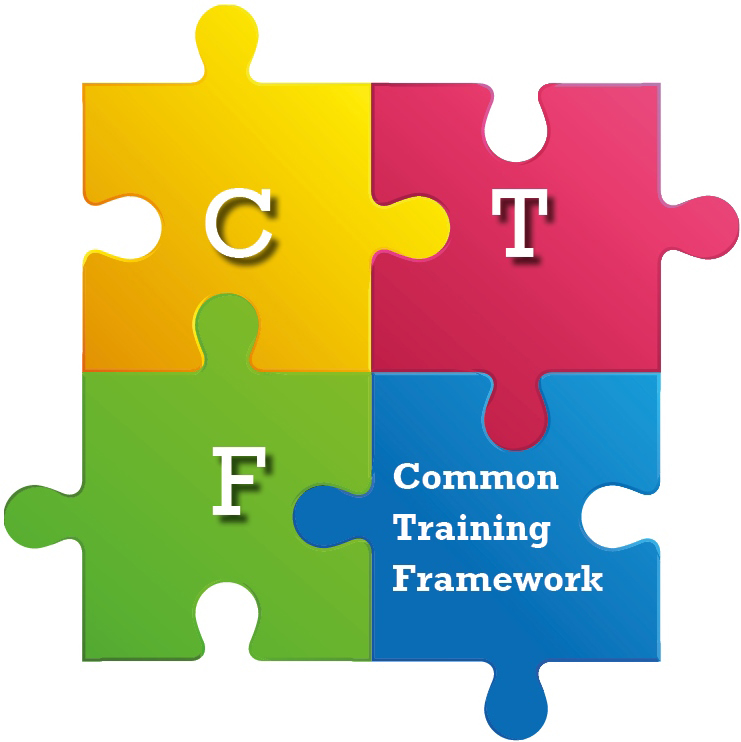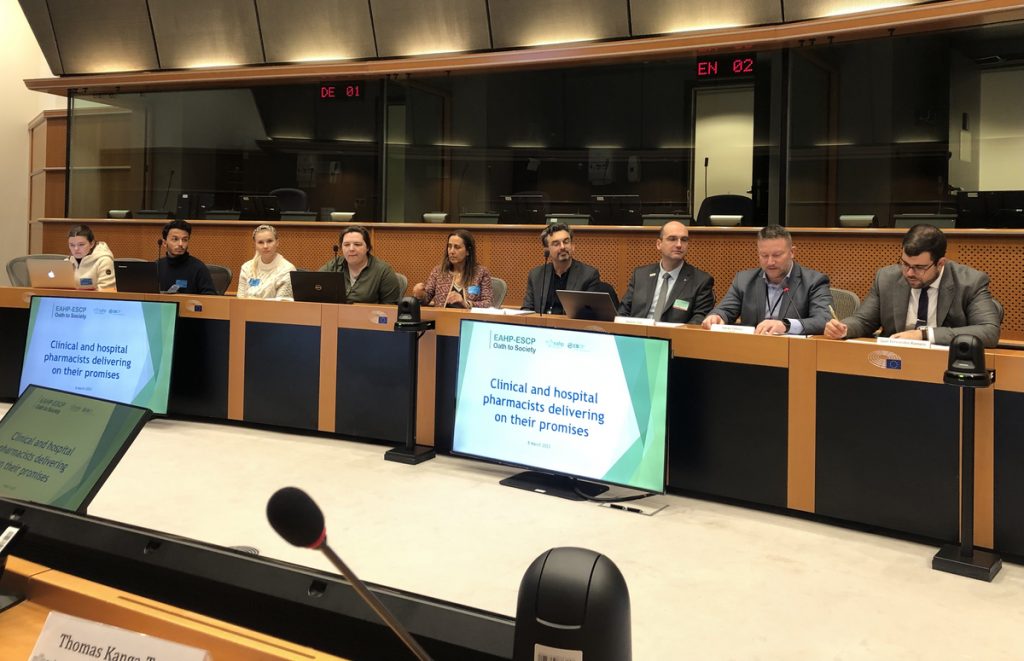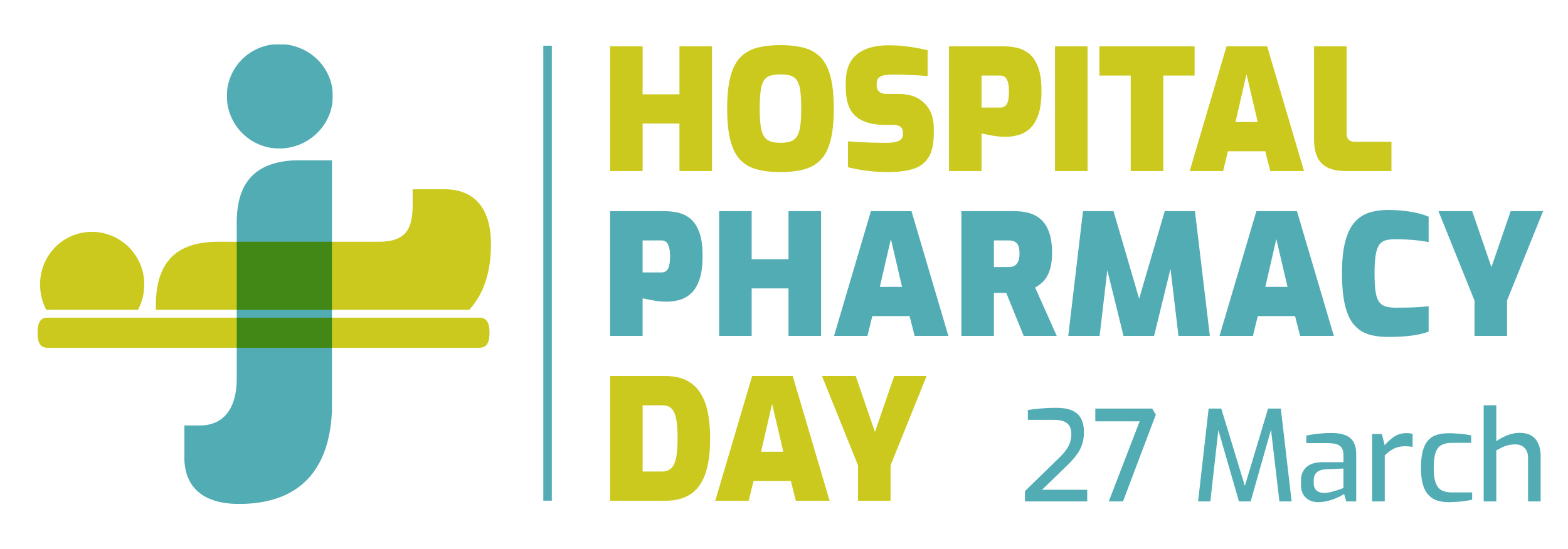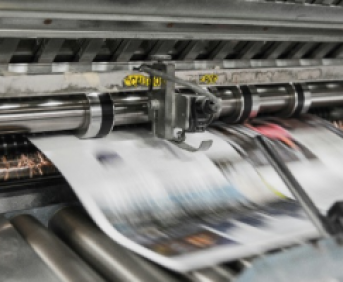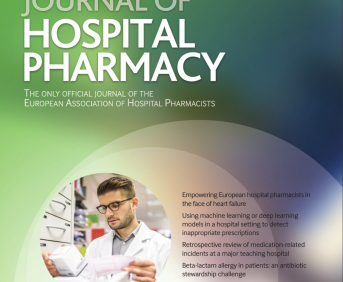SARS-CoV-2 specimen collection kits: maintaining supply through in-house production
Pdf

European Statement
Production and Compounding
Author(s)
Nikolaus Lindner, Doris Haider
Why was it done?
In Austria, Covid-19 infection rates began to increase in March. At Clinic Favoriten, over 700 patients were treated during the first wave. This resulted in an increasing demand of specimen collection sets. Even though various wholesalers and contractors were contacted, the orders could not be served in a quantitative or timely manner. These circumstances forced the pharmacy to look for alternative solutions.
What was done?
During the first wave of SARS-CoV-2 infections the hospital pharmacy of Clinic Favoriten, Vienna’s specialised Covid-19 center, assembled specimen collection sets manually to meet rising demands, compensate for shortages and secure vital diagnostics supply.
How was it done?
In collaboration with the laboratory department and other clinics of the Vienna health care group appropriate materials with CE-certification were sought to assemble a set that is easy to handle concerning production, distribution and application.
Sterile plastic tubes were filled aseptically with physiologic saline and labelled. Tubes and sterile swabs were then packed in a plastic bag that was sealed with a label providing general instructions for use. Manufacturing protocols as well as batch documentation ensured quality assurance and traceability.
Major obstacles included availability and suitability of the needed materials. Manufacturers of tubes and swabs had to be changed over time, which required close communication with medical wards and the laboratory department.
What has been achieved?
Over a period of seven weeks 2.033 specimen collection sets were assembled. In detail, a total of 20.330 swabs were packed and 10.165 tubes were filled. Through this measure a continuous supply of specimen collection sets, essential for further Covid-19 testing, was secured.
Moreover, the importance of a pharmacy in-house production with the aim of maintaining supply security was acknowledged throughout the entire hospital.
What next?
The initiative has demonstrated that pharmacists play a vital role in handling product shortages and maintaining supply security. In the future, the pharmacy will reinforce to monitor trends even more and will thus be able to balance changing demands and non-availabilities. Like this, the existence of an in-house pharmacy department securing appropriate supply will gain more and more significance. In times of increasing shortages, the initiative serves as a model for other healthcare systems confronted with similar difficulties.
NEW TECHNOLOGIES TO IMPROVE SAFETY IN PREPARATION AND ADMINISTRATION OF INTRAVENOUS ANTINEOPLASTIC DRUGS
Pdf

European Statement
Patient Safety and Quality Assurance
Author(s)
Carlos Aparicio Carreño, Arantxa Gándara Ande, Beatriz Fernández González, Andrea Forneas Sangil, Belén Rodríguez de Castro, Rubén Pampín Sánchez, Cristina Martínez-Múgica Barbosa, Paloma NIeves Terroba Alonso
Why was it done?
To improve safety during preparation and administration of IAD.
What was done?
A new computerized system was established to improve quality control and traceability in preparation and administration of intravenous antineoplastic drug (IAD).
How was it done?
The software currently in use was updated, checking densities of IAD, weights of diluents and consumables. Protocols in pharmacology were adapted and maximum permissible error rates during elaboration were established. The Aseptics Pharmacy Department was equipped with a barcode label printer (BLP), a barcode scanner (BS), a precision scale and an All In One computer for the biological safety cabinet (BSC). The Haematology and Oncology Day Treatment Unit (DTU) was equipped with a BLP (for hospital bracelets) and portable computers with BS.
Regarding elaboration, a qualitative control was performed in the BSC by scanning data matrix or barcodes, recording batches and expiration dates, both of the diluent and antineoplastic agents. A quantitative gravimetric test was also performed using weight measurement of the diluent and devices before and after adding the drug. When the mixture was correctly prepared a label was printed with an identifying barcode.
Administration of the right bag to the right patient was also ensured by scanning barcodes in DTU: A hospital bracelet with a barcode was printed to identify each patient at their arrival to DTU. Prior to administration, double scan confirmation was made, checking patient´s bracelet and treatment (label), by using BS, ensuring that each patient received the drug, at the right dose, on time and by the correct route of administration.
What has been achieved?
All intravenous cancer therapies have been administered with double scan confirmation in DTU since the new system was established (November 2019).
This new way of processing IAD has been completely installed, but not all the antineoplastic treatments have been prepared with quality control.
The whole process has also left a complete computer record of the staff, task performed, time, duration and potential incidents.
What next?
We will gradually implement quality control while processing all intravenous antineoplastic treatments.
COMPARISON OF ENVIRONMENTAL CONTAMINATION WITH CYTOSTATICS IN FOUR AUSTRIAN HOSPITALS AND IMPLEMENTATION OF A STANDARDISED TRAINING ABOUT SAFE HANDLING OF ANTINEOPLASTIC AGENTS ON THE WARD
Pdf

European Statement
Production and Compounding
Author(s)
Martin Munz, Ewelina Korczowska, Maria Costa, Christine Petter, Shahla Farokhnia, Katharina Kronister, Sandra Dunkler, Thomas Schweiger, Martina Anditsch, Martina Jeske
Why was it done?
Several studies show that contamination with cytostatics is found on various work surfaces in hospitals [e.g., Chauchat L et al. 2018, Hon CY et al. 2014]. Wipe sampling for surface residue of antineoplastic and other hazardous drugs in healthcare settings is currently the method of choice to determine the workplace’s environmental contamination with these drugs [Connor TH et al. 2016].
What was done?
Hospital pharmacists of four Austrian hospitals (Vienna General Hospital, Innsbruck University Hospital, Landesklinikum Horn-Allentsteig, and Landesklinikum Zwettl) differing in size, logistic requirements and production capacity, equipment (but all using Closed System Devices), and involved staff participated in the MASHA (Research about Environmental Contamination by Cytotoxics And Management of Safe Handling Procedures) project of the European Society of Oncology Pharmacy (ESOP).
How was it done?
In the first part of the project, surface contamination by cytostatics was investigated using wipe samples. Subsequently, training materials were developed and used for uniform training of medical staff involved in administering antineoplastic drugs. After the training, a second set of wipe samples of the same surfaces were taken and analyzed.
What has been achieved?
All four hospitals’ results in the first series of measurements were below the reference value given in the project of 0,1ng/cm², indicating “low” contamination. Only a small amount of samples show values between the limit of quantification (LOQ), dependent on the substance and analytical method, and 0,1ng/cm². The same is for the second series of wipe samples after the training. Considering that standards, recommendations or trainings by pharmacists or occupational health professionals has already been in place before this project, the impact of further training for the medical staff could not be quantified by measuring the residues. However, feedback from trained staff was exclusively positive, and our main objective to demonstrate that occupational exposure with cytostatics is low to non-detectable on our wards was achieved.
What next?
We want to encourage more hospitals to get involved in similar projects, and we hope that more powerful analytics will give us more answers for proper handling.
Outpatient administration of dose-adjusted etoposide, prednisone, vincristine, cyclophosphamide, doxorubicin (DA-EPOCH) for Non-Hodgkin lymphoma
European Statement
Production and Compounding
Author(s)
Marianna Rivasi, Gregorio Medici, Lucia Ricchi
Why was it done?
Because of the need to administer DA-EPOCH over a continuous 96-hour period, patients are traditionally hospitalized. Frequently, these admissions may be delayed because of bed shortages. Previous studies have shown that EPOCH-containing regimens can be safely administered in the outpatient setting, thus decreasing inpatient bed use and overall health care costs. Home-based chemotherapy is normally preferred by patients and helps reduce the risk of hospital-acquired infections; furthermore, other aspects such as functional decline and social isolation are minimized. Beginning in August 2019, we introduced an outpatient EPOCH-based chemotherapy model with portable infusion pumps and have already treated 9 patients.
What was done?
DA-EPOCH (etoposide, prednisone, vincristine, cyclophosphamide and doxorubicin) -based chemotherapy is traditionally administered inpatient because of its complex protocol and number of involved medications. These routine admissions are costly, disruptive and isolating to patients. Here we describe our experience transitioning from inpatient to outpatient setting.
How was it done?
We purchased 3 CADD-SOLIS infusion pumps (Smiths Medical) and connected them to the bags containing chemotherapy. One of the main issues we observed in this procedure was the flow disturbances due to the presence of small air bubbles in the pump delivery line so we tried to develop a method aiming to reduce this effect.
We changed the first type of device we used with a new one consisting of an irreversible spike needle-free access to IV bag (BTC, Italia) inserted to the medication port of the bag. Into the spiking port we insert the CADD High-Volume administration set. It is crucial to remove all the air inside the IV bag and make sure there is no extra air injected into the bag when adding medication, finally do not forget to fully prime the tubing.
What has been achieved?
Outpatient EPOCH administration was associated with cost savings of approximately 400.000€ for both chemotherapy costs and hospital day avoidance (45 days). In addition to cost savings, outpatient administration improve patient satisfaction, without any apparent decrement in treatment efficacy.
What next?
Outpatient treatments would lead to changes in how both patients and providers relate to cancer care. Transitioning care out of the hospital and related cost reduction allowed for additional investments in public health.
THE EXPERIENCES OF A UNIVERSITY HOSPITAL MEDICATION PREPARATION UNIT IN COVID-19 PANDEMIC
Pdf

European Statement
Clinical Pharmacy Services
Author(s)
Sinem Şeker Şimşek
Why was it done?
In terms of medication and patient safety, to establish a safe non-cytotoxic medication preparation process, to ensure continuity of well-educated and motivated pharmacy staff are the key elements of pharmacy-based medication preparation units. This work aimed to share our experiences about how to be challenged with the risk in the drug preparation process during the pandemic as a university hospital pharmacy centered non-cytotoxic medication preparation unit.
What was done?
We have taken general precautions recommend by the World Health Organization. However, the protocol we have used to prepare Lopinavir/Ritonavir, Preparation of Hydroxychloroquine sulfate, Favipiravir and Hydroxychloroquine sulfate with Simple Syrup, Preparation of intravenous drugs (Tocilizumab)
How was it done?
The preparation of solid oral dosages, which should be administered to intubated Covid-19 patients through a nasogastric tube, was prepared by the ready to administration team of our pharmacy.
There is no evidence-based data on the bioavailability of these enteric-coated tablets after being crushed and administered to these vulnerable patients. The biggest challenge was lack of the reliable medication information sources. Before starting the Covid-19 medications preparation process, possible risks that could arise if crushed administration of these drugs were evaluated with a multidisciplinary team.
What has been achieved?
We suspended the Lopinavir/Ritonavir with dextrose during the preparation phase. We preferred the lavage syringe for intravenous administration risk elimination through ensuring patient and drug safety by preventing the risk of intravenous administration of the diluted suspended drug we have prepared. However, when we used a 3-way infusion manifold the strain during pushing and easy disconnection of the joints thus the risk of dose loss were the disadvantages.
What next?
The two pillars of dealing with the COVID-19 epidemic, which has affected the whole globally, are the proper preparation of the necessary medicines for treatment and the treatment itself. Drugs were prepared in line with the search for “a practical solution immediately” and the directives of the Ministry of Health and successfully administered to the patients. Our study is noteworthy as it shows that drugs can be prepared not only by the default ways but also by the different methods
Good Manufacturing Practice and chemotherapy preparation: A case study on implementation of a robotic system in a Danish hospital pharmacy.
Pdf

European Statement
Production and Compounding
Why was it done?
In 2017, the hospital pharmacy has started a project for automated chemotherapy preparation aimed at managing the increasing workload, while ensuring highest level of quality and healthcare workers safety. In Denmark, the authorities expect hospital pharmacy preparation to be GMP compliant. To achieve the best implementation of APOTECAchemo, go-live was preceded by thorough qualification process and followed by robot performance evaluation in a GMP-pharmacy.
What was done?
A robotic system for aseptic preparation of cytotoxic drugs was implemented in the pharmacy-based, Grade C cleanroom compliant with Good Manufacturing Practice (GMP). Specific work organisation allowed the integration of APOTECAchemo into the pharmacy workflow, thereby steadily improving the robot productivity.
How was it done?
A multidisciplinary team defined 228 User Requirements Specification (URS) addressed in the tender and associated to GMP regulations to assess that the technology complied with the intended purpose. APOTECAchemo passed through all qualification stages: design qualification (DQ), factory-acceptance testing (FAT), installation qualification (IQ), site-acceptance testing (SAT), operational qualification (OQ), performance qualification (PQ). The implementation of robot was evaluated in terms of doses prepared, active ingredients processed, and % of the total production compounded. Data were taken from the management software and examined from June 2019 to September 2020.
What has been achieved?
The qualification process was completed in 13 months (from April 2018 to May 2019). APOTECAchemo fulfilled the requirements set in accordance with GMP regulations and went live in May 2019. In the first 15 months of operation, 20,968 doses were prepared with the robot, of which 18,242 infusion bags (87%) and 2,726 elastomeric pumps (13%). The number of active ingredients processed were 21, of which five (5-fluorouracil, calciumfolinate, irinotecan, gemcitabine, carboplatin) covered 58% of the total production. Average production of the robot increased by 39%, from 963 doses/month in 2019 to 1,582 doses/month in 2020. The % of the total production operated by APOTECAchemo rose from 20.9% (2019) to 46.4% (2020).
What next?
APOTECAchemo robot was successfully implemented in a fully GMP-compliant hospital pharmacy, thereby enabling the automation of the preparation process and the reduction of the manual operations. Through the evaluation performed, the hospital pharmacy decided to install a second robotic system to further enhance the automated production.
DEVELOPMENT OF A STANDARDISED PAEDIATRIC PARENTERAL NUTRITION FOR THE FIRST DAYS OF LIFE OF A TERM OR PRETERM NEWBORN
Pdf

European Statement
Production and Compounding
Author(s)
Isabelle Sommer, David Palmero, Céline Julie Fischer-Fumeaux, Lydie Beauport, Vincent Adamo, Hervé Schwebel, Pascal Bonnabry, Lucie Bouchoud, Farshid Sadeghipour
Why was it done?
PN can be composed of about 50 different ingredients, whereof the majority are amino acids (AA). Therefore, PN represents a complex and high-risk fabrication. ME are often related to PN and may include prescription, transcription, preparation, and administration errors. As the treatment with PN is indispensable for a good cerebral and neurologic development as well as a postnatal weight gain, ME can result in growth retardation, developmental disturbances, and infections.
This project was performed with the aim to reduce ME having an impact on vulnerable newborns and to improve the security and quality of their nutritional treatment.
What was done?
A standardized pediatric parenteral nutrition (PN) solution for the first days of life of newborn infants has been developed. An industrial partner manufactures the ready-to-use double-chamber bag which is available 24/7 and of high-quality allowing a secured administration as well as a reduction of medication errors (ME).
How was it done?
A working group composed of pharmacists, clinicians, neonatologists, and industrials developed a PN solution for the first days of life of newborn infants conforming to the needs of two different neonatal services. An applied standardized PN and the ESPGHAN guidelines haven been used as references. The feasibility of an industrial production of double-chamber bags has been evaluated and implemented.
What has been achieved?
The developed PN solution has been formulated for a peripheral venous administration with an osmolarity under 900 mOsm/L to allow a wider range of application. The production of double-chamber bags has been chosen to increase the stability and shelf-life. The first compartment contains an AA admixture and the second compartment contains glucose and electrolytes (sodium, calcium, organic phosphate). This solution is initially produced by the service of pharmacy and afterwards by the industrial partner. The standardized PN bag has been implemented successfully on the neonatal ward in March 2019. Since then, almost 1800 standardized bags have been used (appr. 90 bags/month), resulting in a reduction of individual on-ward PN preparations of nearly 80%.
What next?
Further standardized PN for newborn infants need to be developed to allow a safe nutritional treatment. On-ward PN preparations must be prohibited to prevent undetectable preparation errors.
BEST PRACTICES FOR THE IMPLEMENTATION AND USE OF THE APOTECACHEMO TECHNOLOGY AGREED BY THE GERMAN HOSPITAL PHARMACY USER GROUP
Pdf

European Statement
Production and Compounding
Author(s)
Bastian Mende, Irene Krämer, Jannik Almasi, Christoph Klaas, Bernhard Rainer Kujau, Swantje Eisend, Herwig Heindl, Jacopo Raffaelli, Jochen Schnurrer
Why was it done?
During a two-day meeting in September 2018, the German community of APOTECAchemo users and technology experts developed Best Practices for the optimal implementation and subsequent application of APOTECAchemo technology in pharmacy based aseptic preparation of ready-to-administer antineoplastic medicinal products.
What was done?
Robotic systems, designed for the aseptic preparation of ready-to-administer parenterals in hospital pharmacies, should facilitate a fully integrated workflow and a process organization interconnecting the automated and manual preparation. Despite some differences between the hospital pharmacies, the definition of standards and Best Practices for the automated compounding of cytotoxic preparations facilitates the implementation of the technology in different hospital pharmacies.
How was it done?
Prior to the meeting of the user group a survey with 24 statements for the implementation and use of the APOTECAchemo technology was sent to the German APOTECAchemo users. The 24 Best Practices were assigned to 4 categories: Workflow & Organization, Production, Roles & Responsibilities and Quality & Process Control. The survey participants evaluated the proposed Best Practices in view of the practicability in German hospital pharmacies. During the meeting, results of the survey were consented or adapted and additional best practices were defined.
What has been achieved?
The German user group defined the Best practices for the implementation and use of APOTECAchemo technology. The most relevant result for each of the four categories is:
• Workflow and Organisation: The automated preparation should reduce the daily workload of manual preparation and minimize potential errors.
• Production: Optimum interconnection between technicians and the robot will increase the efficiency.
• Role and responsibilities: Pharmacists are responsible for the design of the automated production workflow, while technicians become the manager of the automated compounding process
• Quality & Process Control: Microbiological controls must be performed during manual and automated production
What next?
The best practices defined by the German APOTECAchemo Community support experienced users and are especially useful for hospital pharmacies newly implementing the technology.
HAZARDOUS DRUG ENTERAL DEVICE
Pdf

European Statement
Production and Compounding
Why was it done?
The publication of NIOSH List of Antineoplastic and Other Hazardous Drugs in Healthcare Settings established that crushing tablets or making solutions
from them means an unasceptable risk at hospitals.
In adtition to this, USP 800 and Directive 2004/37/EC of the European Parliament on the protection of workers from the risks related to exposure to carcinogens or mutagens at work , impose the use of closed system devices and a plastic pouch to contain any dust or particles generated in these operations.
Conversely, there is no closed system device to crush, disperse and administer safely .
What was done?
We developed a new medical device to protect caregivers from exposure risk derived from crushing and dispersing in water hazardous drugs tablets.
How was it done?
We designed a new medical devide by combining existing issues so as to develop a workable solution that could overcome this safety problem and ensure the compliance with occupational regulations , and ensure a complete dosage.
What has been achieved?
We patented a new medical device that will allow a safe administration reducing exposure risk and environmental pollution at : pharmacy departments ( cross contamination in cabinets ) , nursery units and even at patient´s homes to protect caregivers and relatives.
Its design and simplicity of operation will favor its universalization.
This is an initiative of a hospital pharmacist to solve a daily problem and an example of the our potential in healthcare innovation.
What next?
The commercialization of this medical device will fulfill an unmet need in our daily practice at helathcare facilities and patients homes
The introduction of an emergency intravenous antibiotic reconstitution service during the COVID-19 pandemic.
European Statement
Patient Safety and Quality Assurance
Author(s)
Joanne Rhodes, Chris Bidad
Why was it done?
There was concern that there was a risk of reconstitution errors, missed doses or variation in dosing intervals which could impact on treatment efficacy and patient safety due to:
• a sudden increase in demand for IV antibiotics,
• depleted numbers of front-line nursing staff, and
• nurses being deployed to unfamiliar clinical environments and encumbered by PPE.
The emergency IV antibiotic reconstitution service was designed to mitigate these risks.
What was done?
In the absence of aseptic dispensing facilities an emergency intravenous (IV) antibiotic reconstitution service was set up in a laminar flow operating theatre. Nurses who could not work in a patient-facing role during the pandemic prepared ready-to-use infusions under the direct supervision of a pharmacist.
How was it done?
It was determined that a manufacturer’s licence was not required under part one, section three of the Human Medicines Regulations 2012 providing strict criteria were adhered to. Stability data was collated for the most frequently used IV antibiotics. Even where stability data supported a longer period, a maximum expiry of 24 hours after preparation was assigned. Processes were designed to adhere as closely as possible to the GMP principles described within The Rules and Guidance for Pharmaceutical Manufacturers and Distributors 2017. Specially tailored IV reconstitution training was delivered to the nurses.
What has been achieved?
Over a period of 4 weeks at the peak of the pandemic 1000 doses of IV antibiotics were prepared and supplied, enabling ward-based nurses to focus directly on patients. There were no reports of any incidents of delayed or missed doses, or administration errors relating to IV antibiotics supplied to the wards involved during this period. The time saved on the wards was equivalent to having 3 additional nurses on the wards each day.
What next?
With a reduction in the number of COVID-19 positive patients now presenting to the hospital the service has been paused but placed on standby so that it can be resumed in the event of a second wave. Work is underway to determine if there would be value in the team preparing a wider range of products, particularly those which may be of particular use in critical care areas such as sedatives and inotropes.
